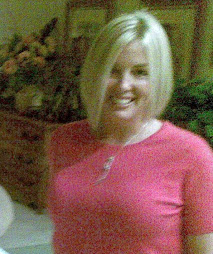Warlick, David (2009, March/April). Grow Your Personal Learning Network. Learning and Leading with Technology, Retrieved March 30, 2009, from
http://www.iste.org/Content/NavigationMenu/Publications/LL/LLIssues/Volume3620082009/MarchAprilNo6/36612w.pdf
According to Davide Warlick, personal learning networks (PLN) have always been around. It’s just that before we thought of them as the people we knew and trusted for information, along with textbooks, magazines, and periodicals. We’ve been digitally connected for a while.
What’s different about today is that we now have digital tools that help us shape how we get that information so that it better serves our individual needs and we are not overwhelmed by information we get. In this new model, we are not just talking about a “destination for information.” The learning is interactive and constantly responding to new input. It’s a more organic learning environment that connects, engages, and empowers people. For example, Warlick posts something on Twitter about PLNs and shortly after is inundated with over 30 responses pointing him in the direction of different tools and sites or lesson ideas.
Warlick identifies the different ways we are connected through our PLNs. First, we have synchronous connections (in real time) that we personally maintain with new tools, such as: chat, text messaging, teleconferencing, twitter, and virtual worlds. Second, there are personal and social semisynchronous connections (collaborations not necessarily in real time) that are “nearly now” or “back and forth” communication. Examples of that are texting, Twitter, Facebook profiles, and questions that are not directed only to one person, but that can also be sent out to a community. Third are asynchronous connections such as the RSS aggregator that feeds and organizes the information directly to you from such sources as, blogs, videos, social bookmarking tools, pod casts, wikis, reports, news and blog searches, or journal articles.
In order to truly act as 21st Century facilitators in connecting our students to the world they are learning about, teachers need to be using these tools and creating learning networks themselves. If we are to prepare students for an uncertain and ever changing future, they need to know how to teach themselves and how to manage a variety of resources to stay up to speed.
What are some tips to organizing a PLN so that it’s simple and effective?
Limit the number of blogs you subscribe to--start small. Warlick suggests organizing subscriptions by topic or job function and creating folders that are organized based on how often you prefer to access them (everyday, once a week, once a month). It’s a good idea to switch it off or ignore sometimes.
What are things to keep in mind when creating a PLN?
There is a responsibility inherent in the creation of our learning networks, since we are connected to other networks as well. A PLN can be limited in its perspective and scope because of the individual limitations of who is involved and because we tend to gravitate towards people who are likeminded. This could limit the diversity of thought or resources available. We need to be consciously aware of creating learning networks that challenge our assumptions and our frames of reference.
Subscribe to:
Post Comments (Atom)



No comments:
Post a Comment